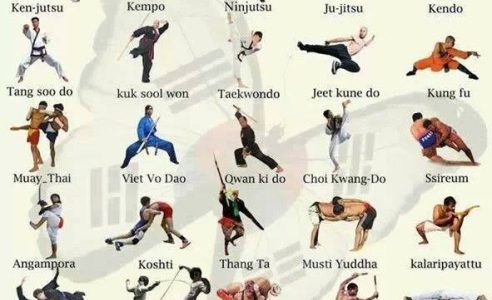Key Differences Between Typical Martial Arts And Modern Battle Sports: An Extensive Analysis
Key Differences Between Typical Martial Arts And Modern Battle Sports: An Extensive Analysis
Blog Article
Material Author-Skovbjerg Brady
When you think about martial arts, do you lean much more towards the traditional techniques or the modern fight sporting activities? visit the following website page supplies unique advantages and experiences, shaped by their philosophies and training approaches. Typical martial arts stress individual development and technique, while modern fight sports focus on competitors and performance. Comprehending these differences can lead you in selecting the best method for your journey. But just how do these distinctions materialize in training and ideology?
The Philosophy and Background Behind Traditional Martial arts
While many people connect martial arts with physical fight, the philosophy and history behind standard martial arts run much deeper. You'll discover that these disciplines emphasize personal growth, discipline, and respect.
Originating from old methods, conventional martial arts were often established for Self-Defense and spiritual advancement. They embody principles such as equilibrium, harmony, and self-control, directing practitioners past mere battling abilities.
As you train, you'll not just learn strategies but likewise get insights right into the culture and worths that formed these arts. The rituals and practices, frequently passed down with generations, cultivate a sense of community and belonging.
The Affordable Nature of Modern Fight Sports
Modern fight sports have actually transformed the landscape of martial arts into an extremely competitive field, where professional athletes challenge in a test of ability, technique, and endurance.
You'll see that competitors are typically arranged with stringent regulations and laws, making sure fair game and security. These occasions attract huge audiences, fueling the excitement and intensity of matches.
Athletes train rigorously, not just for physical prowess yet likewise for psychological durability, understanding that every detail counts in the ring. visit the up coming document during competitions is palpable, as boxers push their limitations to claim success.
Fans value the athleticism and virtuosity included, making modern-day combat sporting activities a thrilling spectacle that continues to progress and astound lovers worldwide.
Training Methods and Techniques: A Comparative Evaluation
The affordable ambience of modern battle sporting activities demands cutting-edge training approaches that differ substantially from conventional martial arts.
In modern-day training, you'll concentrate on details methods, competing, and conditioning, frequently utilizing drills that replicate genuine battle scenarios. You'll see a focus on quantifiable efficiency and frequent competitors to analyze your skills.
On the other hand, conventional martial arts focus on kinds, katas, and philosophical teachings, usually highlighting technique and regard over competitors.
Training is normally less intense and may involve repeated practice as opposed to real-time sparring.
While both strategies build skill and physical fitness, modern battle sporting activities supply a much more dynamic and adaptable training atmosphere, preparing you for instant challenges in the ring or cage.
Pick the course that lines up with your goals and passions.
Conclusion
In selecting between traditional martial arts and modern battle sporting activities, it really boils down to what you value many. If you're looking for individual development, technique, and a feeling of community, conventional arts might be your finest fit. Yet if you thrive on competitors and real-time challenges, modern battle sports could be the way to go. Eventually, both paths use distinct benefits, so it's all about straightening your training with your personal objectives and rate of interests.
